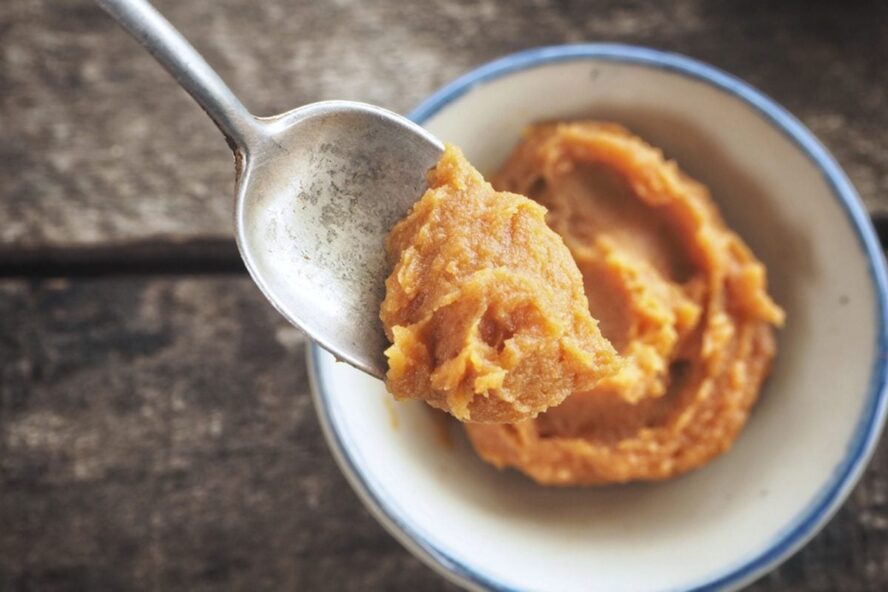The general population has become more interested in fermented foods due to certain health benefits that research has shown [1,2]. The market for fermented foods keeps expanding. One of these fermented foods is miso, a traditional Japanese paste made from fermented soybeans. Recent research has shown its potential for improvement in gut health and support for the immune system [3,4,5].
Microorganisms involved in miso production have been used in studies to determine their probiotic effects. For example, probiotic yeasts isolated from miso have shown evidence in reducing stress-induced gut issues and improving barrier function in mouse models [1]. Some bacterial strains from miso appear to strengthen the body’s immune response by increasing activation marker CD86—an essential molecule on B cells that helps coordinate antibody production [1,3]. Specifically, Tetragenococcus halophilis has been shown to have beneficial compounds that help balance gut flora and promote an anti-inflammatory response [4].
These findings show potential for developing standardized miso products with targeted probiotic profiles. By refining salt concentration, fermentation time, and microbial composition, the future of miso could offer benefits to health [2,5]. This would ensure a consistent delivery of the health-promoting compounds in miso. As scientists figure out the microbes within miso, how can producers use this data to design fermented soybean products that promote nutritional and functional benefits?

